|
 Fuligo septica Fuligo septica
SynonymsAethalium septicum
Fuligo varians
Mucor septicus
BiostatusPresent in region - Indigenous. Non endemic
Images (click to enlarge)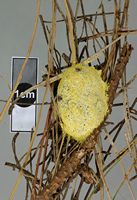
Owner: J.A. Cooper | 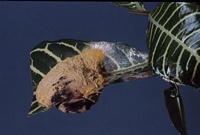
Owner: Herb. PDD | 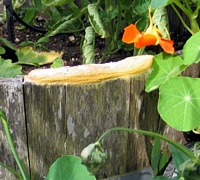
Caption: Barrel in vegetable garden, Christchurch, January 2008
Owner: Hugh Aston | 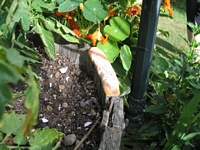
Caption: Barrel in vegetable garden, Christchurch, January 2008
Owner: Hugh Aston | 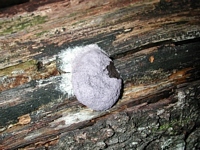
Caption: sporangia
Owner: J.A. Cooper | 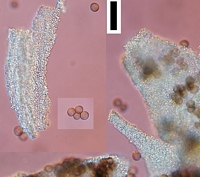
Caption: scale = 20um. Spores and capillitium consisting of lime granules.
Owner: J.A. Cooper | 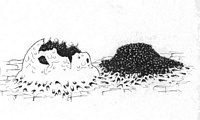
Caption: Two aethalia of Fuligo septica on decaying wood. The one on the left is about 2.5 cm broad.
Owner: S.L. Stephenson |
Article: Stephenson, S.L. (2003). Myxomycetes of New Zealand. Fungi of New Zealand. Ngā Harore o Aotearoa 3: xiv + 238 p. Hong Kong: Fungal Diversity Press.
Description: Fruiting body an aethalium, solitary to gregarious but usually not widely separated, pulvinate, usually relatively large, 2–20 cm wide or long and 1–3 cm thick. Cortex usually fairly thick, calcareous, fragile, white to pale or bright pink or red to bright yellow. Capillitium consisting of white, yellow or reddish fusiform lime nodes connected by hyaline threads, sometimes scanty. Spores dark grey or dull black in mass, light purplish brown by transmitted light, nearly smooth to minutely spiny, 6–9 µm in diameter. Plasmodium usually yellow, sometimes white or creamy.
Habitat: Decaying wood and bark, forest floor litter, wood debris, and soil; sometimes fruiting on living plants.
Distribution: Cosmopolitan (Martin & Alexopoulos 1969). First reported (as Aethalium septicum) from New Zealand by Berkeley (1855), based on a specimen collected by W. Colenso in Northland. Also known from the Kermadec Islands, Auckland (Kirk 1872), Coromandel, Waikato, Bay of Plenty, Taupo, Wanganui, Wellington (Buchanan 1874), Gisborne, Hawkes Bay (Colenso 1887), Nelson, Westland, Fiordland, North Canterbury, Mid Canterbury (Armstrong 1880), South Canterbury (Lister & Lister 1905), Otago Lakes, Dunedin (Lister & Lister 1905), and the Auckland Islands.
Notes: Fuligo septica is one of the most common, conspicuous, and best known of all myxomycetes. It is exceedingly variable, and several forms that appear to be consistently different from what is considered the typical expression for the species have been recognised as distinct taxonomic entities (either varieties or separate species) by some authors (e.g., Neubert et al. 1995, Ing 1999).
|